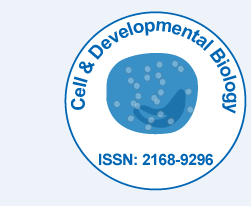
Cell & Developmental Biology
Open Access
ISSN: 2168-9296
+44 1478 350008

ISSN: 2168-9296
+44 1478 350008
Opinion - (2024)Volume 13, Issue 6
China patients with Non-Small Cell Lung Cancer (NSCLC) frequently develop Brain Metastasis (BM), which is associated with a poor prognosis. Ceramide Synthase 1 (CERS1) contributes to the development of cancer; however its probable function in NSCLC BM is still unknown. The purpose of this work was to investigate CERS1's physiological effects and molecular mechanism in NSCLC BM. The physiological functions of CERS1 were later investigated in vivo and in vitro.
CERS1 expression was assessed in NSCLC tissues and cell lines. Co-immunoprecipitation and mass spectrometry were used to investigate CERS1 interacting proteins. Molecular biotechnology and bioinformatics analysis were used to better examine the related signaling pathways of CERS1 in NSCLC BM. We showed that CERS1 was markedly down regulated in BM tissues and NSCLC cell lines, and that its overexpression was related to a better prognosis. In cultured cells, overexpression of CERS1 prevented blood brain barrier penetration, invasion, and cell migration. Moreover, CERS1 interacted with USP14 to prevent the advancement of BM via inhibiting the PI3K/AKT/mTOR signaling pathway. Moreover, in vivo BM tumor development was significantly reduced by CERS1 expression.
This work showed that CERS1 interacts with USP14 and suppresses the PI3K/AKT/mTOR signaling cascade in NSCLC BM, making it a new therapeutic target for this kind of cancer. The most prevalent kind of cancer and the main reason for cancer related deaths globally is lung cancer. About 85% of lung cancers are Non-Small Cell Lung Cancers (NSCLC), while more than 25% of NSCLC patients also have brain malignancies 2023, 15 or 1994. Despite significant advancements in treatment, individuals with NSCLC BM have a median Overall Survival (OS) of just around 12 months. Thus, it is crucial to pinpoint the underlying molecular causes of BM in NSCLC and create fresh, focused treatments.
Recent studies have identified important chemicals and mechanisms that play a role in the complex process of BM formation in NSCLC. According to molecular investigations, increased MYC, YAP1, and MMP13 help generate BM in NSCLC. In addition, stimulation of the WNT/TCF pathway, which works through the transcription factors LEF1 and HOXB9 to improve the competence of tumour cell invasion and proliferation, has been identified as a predictor of BM in lung adenocarcinoma. The underlying process is still not known in spite of substantial studies on the important chemicals in NSCLC BM. The main element of biologically active sphingolipids is ceramide, and aberrant levels have been seen in a number of illnesses. Sphingosine is re-acylated by ceramide synthase in the lysosome as part of the catabolic pathway, which is the main route through which ceramide is largely generated. Each CERS creates ceramide in this process with a distinct acyl chain length, giving cells unique ceramide characteristics that either inhibit or promote cell proliferation. Importantly, there was a strong correlation between aberrant CERS expression and the etiology of different malignancies.
For instance, there is a correlation between lymphatic infiltration and lymph node metastases and a decreased expression level of CERS1 in head and neck cancers compared to normal tissues. Inhibiting extracellular matrix breakdown and MMP-2 and MMP-9 activity, CERS2 overexpression prevents breast cancer cell invasion. Additionally, according to Chen, et al., report's CERS4 was abundantly expressed in liver cancer tissues and encouraged the growth of liver cancer cells via the NF-KB signalling pathway. Lung, colon, breast, ovarian, and other malignant tumours have all been linked to CERS6 as cancer promoting factors. However, the physiological impacts and molecular mechanisms of CERS, particularly CERS1, in NSCLC BM have not been documented. In this study, we sought to assess CERS (CERS1-6) expression in NSCLC tissues and cell lines. We discovered a strong correlation between CERS1 and NSCLC BM. We looked into CERS1's physiological functions and underlying processes in both in vitro and in vivo settings in NSCLC BM.
Citation: Xu W (2024). Ceramide Synthase 1 Inhibits Brain Metastasis of Non-Small Cell Lung Cancer by Interacting with USP14. Cell Dev Biol.13:377.
Received: 01-Oct-2024, Manuscript No. CDB-23-22550; Editor assigned: 04-Oct-2024, Pre QC No. CDB-23-22550 (PQ); Reviewed: 18-Oct-2024, QC No. CDB-23-22550; Revised: 25-Oct-2024, Manuscript No. CDB-23-22550 (R); Published: 01-Nov-2024 , DOI: 10.35248/2168-9296.24.13.377
Copyright: © 2024 Xu W. This is an open-access article distributed under the terms of the Creative Commons Attribution License, which permits unrestricted use, distribution, and reproduction in any medium, provided the original author and source are credited.